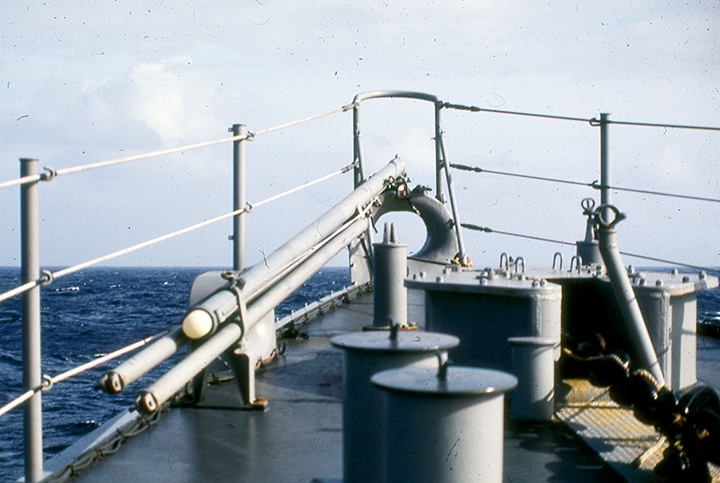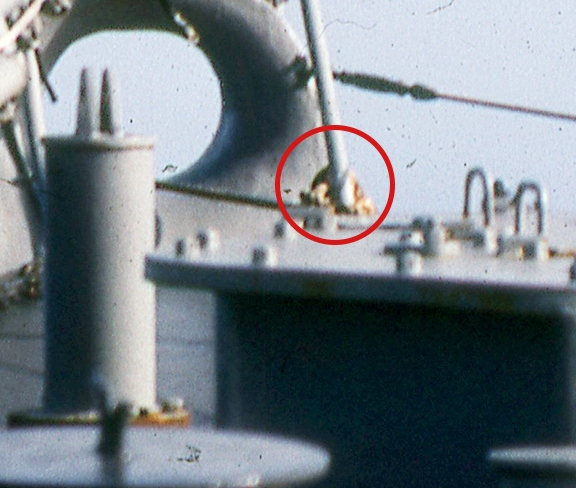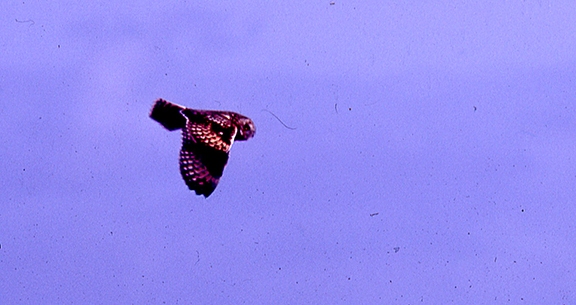The experience still revealed, to me and I’m sure others, the awesomeness of the open sea and the relative tiny scale of our 547-foot-long vessel.
The photo that is at the top of this blog was taken, I believe, during this time. It had to be cropped to fulfill its purpose here and that reduction may have lessened its impact somewhat. Below is the full frame.
There were dozens of times when the ship would be lifted by the following sea and, as the wave crested under the ship, it would lift the stern out of the water. With the screws no longer underwater, their rotation, instead of propelling the ship, made the ship shimmy, shiver, and shake. It was an unnerving experience.
Then, with the ship at the top of a massive wave, gravity, rather than propulsion, would pull the ship down the face of the wave. My sense was that the ship was then “surfing” down the wave without the bridge watch having a lot of control of the situation.
I found the situation exciting, whereas the nighttime storm had been frightening.
Here’s ENS Graham with some memories, including some where the Biddle slid back down the wave, stern first: “I remember blue water over the bullnose (I think for several days we “buried the bullnose” at least once a watch), and all hands were confined to their bunks unless on watch.
“We altered course to the north to put the seas on our quarter (I think it was the port quarter) and the seas were moving faster than we were. The swells would come up from astern and Biddle would ride up, stern first (that’s where the screws probably came out of the water when we went over the top of the wave) and then slide down the back side to the trough between two towering waves.”
Graham added something I was glad to see. I had the same recollection, but wasn’t absolutely confident of its veracity, because it seemed so far-fetched.
“I also remember,” Graham said, “the owl who flew in and perched on the foredeck during the worst of the storm (we must have been a thousand miles from land) and stayed with us like the Ancient Mariner’s albatross until disappearing when we were about two days from port (San Francisco).”
We were far from land, but I think less than 1,000 miles away. 🙂 It was still more than amazing that a small owl would be able to live through such a storm, be fortunate enough to land on a speck of solidity in the vast ocean, and then take off to uncertain future. I remember taking a picture of the owl, but that slide was among those stolen from my car during a stopover in New York City the next summer. Anybody else remember the owl?
UPDATE: I found pictures I had taken of the owl. Here’s a gallery.
Here’s video (2:45) from the films shot by GMG2 Boyles and GMG2 Kuczmarski. Great shots of bullnose action and waves alongside.
Closer each minute to San Francisco.




